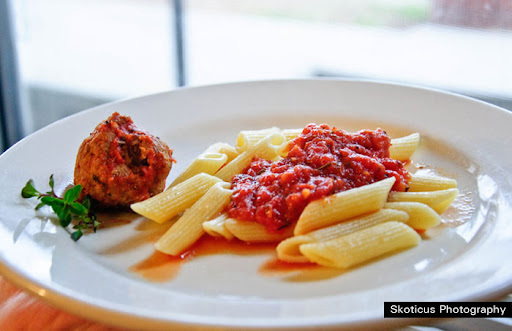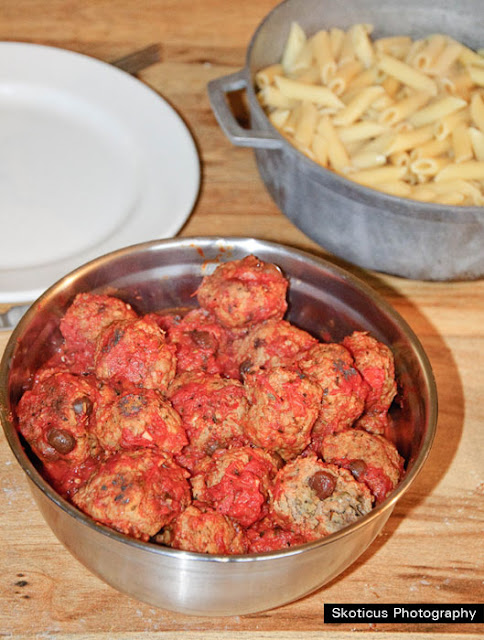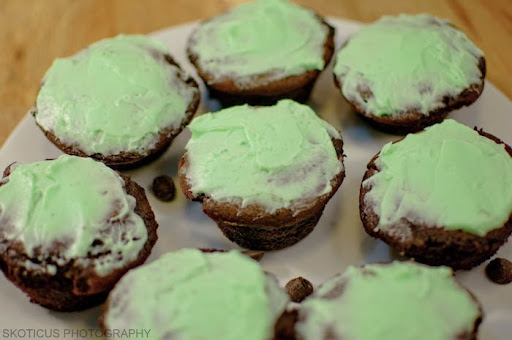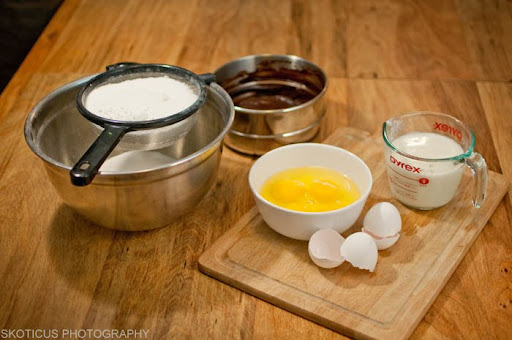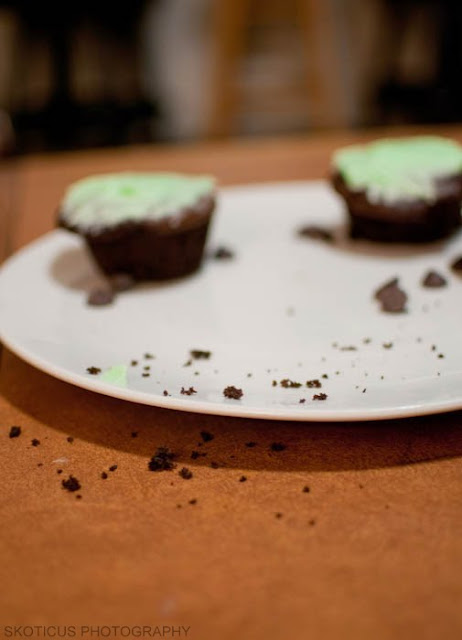Friday, July 30, 2010
Discussing the Secrets of an Amazing Red Tomato Sauce (Rigatoni)
Sorry that it has taken me so long to post again. Anyone who reads my blogs, feel free to bug me about them, ask questions, or make recommendations as to what you would like to see on the website.
My family only has one truly secret recipe, Rigatoni. So I can't actually share the recipe for it with you (though I solemnly swear to share all other recipes that I make with you, as long as I remember) much as I would like too. If, however, you happen to be in Provo and are feeling hungry I will be happy to share a plate of Rigatoni with you, just comment when you are in town, or email me at lawfromchaos@gmail.com. At the moment I have about two quarts of sauce in the freezer, mmmmm Rigatoni.
Even if I can't share the actual recipe for Rigatoni with you, I can still give you some suggestions, and a few of the methods that go into making an exceptional sauce (Rigatoni is one of my three favorite foods, the other two being Pasty, which is a traditional English dish, and Sushi, which is definitely not a traditional English dish).
First:
Cook the sauce for a long period of time, preferably all day. This is especially important for sauces which use dried herbs, as the long cooking process is required to get the flavor out of the herbs and into the sauce. It should be noted, however, that this is not the case with recipes that rely on the fresh taste of the tomatoes, such as many bruschettas. When the tomatoes in my garden are ripe, I will in fact be making a delicious tomato, onion, and fresh basil bruschetta that cooks for only about 20 minutes (I love serving this over toasted homemade bread, it is amazing, though it goes great with pasta as well).
Second:
Do not be afraid to add more herbs, or create your own variation. It seems at times that red pasta sauce will absorb herbs and taste no different. This is not the case, however, red sauce often needs more herbs than you would think. Also, you should balance out the flavor to add complexity to your sauce, using many complementary herbs allows this to happen. Don't be afraid to experiment with new variations, or follow recipes blindly. Following a recipes can often help, but if you think it needs more garlic, then by all means do a little experimenting. Rigatoni, for example is made slightly differently by each member of my family, even though we all hold to the core techniques. I tend to use more rosemary, while someone else in the family may use other herbs in different levels to their taste.
Third:
Balance out the acidic taste of tomato sauce. Pure tomato sauce tends to taste acidic (it actually tastes much like Spaghetti-o's). This comes from blending the sauce down, as you usually don't taste this flavor in fresh tomatoes. This flavor tends to detract from the overall quality of the sauce, and so should be balanced out. This can be done by adding a small amount of sugar. Also, adding anise seed or fennel seed also help.
Fourth:
Make your sauce a thickness which is appropriate to what you are serving it with. Usually, what you need to think about is the noodles. Our family's special Rigatoni, which is called that because is served with rigatoni noodles, is a thick sauce that has been cooked down and concentrated. This goes well with the ridges on the rigatoni pasta. Similarly, you should ask yourself what consistency your pasta sauce ought to be.
Fifth:
How you cook your meatballs. When making meatballs, you will want them to complement the sauce that they are being served with. This usually means that you will add herbs that are similar to what you put in your sauce, in the meatballs. Another thing to do that adds depth to both the flavor of the meatballs and the sauce is to cook the meatballs in the sauce (Meatballs should be browned before you place them in the sauce to cook, this allows them to hold together, gain extra flavor, and have a proper consistency). Cooking them for approximately 3 hours in the sauce will make sure that the meatballs are cooked through, have taken flavor from the sauce, and they should not yet have started to fall apart. If you leave them too long in the sauce the meatballs will start to fall apart, turning your sauce into a meat sauce, which is probably not what you have intended. If you cook meat in the sauce, you should also be sure to spoon off the grease that will form on the top of the sauce, though it is not necessary to spoon off all of it.
Sixth:
Make your pasta "al dente." Al dente means "to the tooth" or "to the bite" in Italian. It is usually considered the ideal stage for pasta to be cooked to. Americans, unfortunately, tend to overcook their pasta into a mush, even at restaurants. Pasta that is al dente should not have the undercooked floury graininess or overcooked softness of pasta. Pasta should instead be firm with a definite need to chew. Achieving this state of pasta requires that you check and taste your cooking pasta often. Also, adding salt to the water helps. Salt raises the temperature that the water boils at by forming ionic bonds with the water. So while the water will take longer to boil, the pasta itself will take less time to cook. Pasta should also ideally be cooked right before serving.
Enjoy,
Andrew Morris
As always, many thanks to Skoticus for providing excellent photography.
Labels:
al dente,
meatballs,
pasta,
Rigatoni,
sauce,
secret recipe,
tomato sauce
Friday, June 25, 2010
Mint Extract
Homemade mint extract is actually quite easy, it just takes some time. Mmmm... Mint.
1/2 cup bruised and lightly chopped mint leaves
1/2 cup vodka
1/2 cup water
Use what ever type of mint leaves that you want for the extract, like peppermint, spearmint, etc... Place all the ingredients in container that be tightly sealed, like a small canning jar. Leave in the jar for at least 2 weeks (the last one I made I let sit for 3 months). Run the extract through a strainer into a bowl to remove the mint leaves. Then put the extract back into the original container. Now it is ready to use, though it will smell horrible. It should be noted that homemade extract is rarely as condensed as store-bought, so you will usually want to double the amount in recipes.
Also, the alcohol acts a good medium for suspending the oils with give the flavor of mint but can be overwhelming when used in recipes where the alcohol is not cooked out. It is also against my religion to drink alcohol, so that could cause a problem... So to get the alcohol out place the amount of extract that you are going to use in the recipe in a microwave safe container and microwave ~35 seconds until the alcohol smell is gone.
Andrew Morris
1/2 cup bruised and lightly chopped mint leaves
1/2 cup vodka
1/2 cup water
Use what ever type of mint leaves that you want for the extract, like peppermint, spearmint, etc... Place all the ingredients in container that be tightly sealed, like a small canning jar. Leave in the jar for at least 2 weeks (the last one I made I let sit for 3 months). Run the extract through a strainer into a bowl to remove the mint leaves. Then put the extract back into the original container. Now it is ready to use, though it will smell horrible. It should be noted that homemade extract is rarely as condensed as store-bought, so you will usually want to double the amount in recipes.
Also, the alcohol acts a good medium for suspending the oils with give the flavor of mint but can be overwhelming when used in recipes where the alcohol is not cooked out. It is also against my religion to drink alcohol, so that could cause a problem... So to get the alcohol out place the amount of extract that you are going to use in the recipe in a microwave safe container and microwave ~35 seconds until the alcohol smell is gone.
Andrew Morris
What says Welcome like Mint Chocolate Cupcakes?
Yay, I am finally starting this blog. What can I say, I procrastinate. I'm only, (looks down at watch briefly) half a year late, thats nothing... in the scheme of things. Okay, well welcome and I hope you throughly enjoy cooking with me. Look, I made cupcakes!
Cupcakes are always a nice addition to the cooking repertoire, especially if you combine two such nice ingredients as chocolate and homemade mint extract. Lets get to it:
Mint Chocolate Cupcakes
Ingredients for:
Cupcakes:
1 stick butter (1/2 lb or 8 oz)
1/2 cup cocoa
2 ounces semisweet chocolate (pure dark is fine, but add a little cream if you have it (don't add milk, it could cause the chocolate to seize))
3/4 cup flour
3/4 teaspoon baking powder
1/2 teaspoon baking soda
1/2 teaspoon salt
3/4 cup sugar
2 large eggs
1/2 cup buttermilk (Or place 1/2 cup of milk(whole-milk if you have it) with 1/2 tbsp lemon juice in bowl, mix, let sit 10 mins, now it should be a serviceable substitute for buttermilk)
1 1/2 teaspoons homemade peppermint extract (if using store bought, use half as much)
1 1/2 teaspoons vanilla extract (double for imitation)
Frosting:
1 stick butter (1/2 lb or 8 oz)
1 teaspoon vanilla extract
1/2 teaspoon homemade peppermint extract (if using store bought, use half as much, also there are some notes on usage in the recipe)
powdered sugar to taste, ~ 2 cups
A little green food coloring if you are so inclined
Preheat oven to 350° F.
Place the butter, cocoa, and chocolate into a double boiler and heat until melted, stirring to incorporate. Take off heat, remove top portion of double boiler and let cool. (If you don't have a double boiler, heat an inch of water in a saucepan and place a metal bowl in the saucepan so that it does not touch the water (you want the bowl to be larger than the pan). Place the ingredients in the bowl and heat the water until it is simmering, remove bowl from saucepan after ingredients have melted.))
Combine the dry ingredients together in a large metal bowl, preferably by sifting them together. (This is especially helpful in removing baking soda / powder clots that sometimes show up in baked goods.) Then mix with a spoon until all the ingredients are thoroughly mixed together.
Whisk together the eggs, extracts, and buttermilk, then combine with the chocolate.
Combine the liquid ingredients with the dry using the whisk until thoroughly combined.
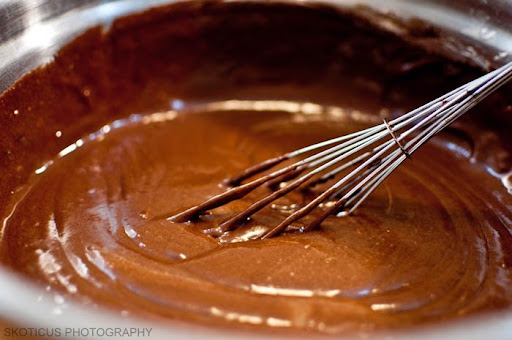
Pour into a cupcake tin lined with paper cupcake liners. If you don't have any cupcake liner be sure to grease the cupcake tin very well.
Bake in the oven 18-20 minutes, until a toothpick inserted into the center of a cupcake comes out clean. (If you don't have a toothpick handy you can always use a piece of spaghetti.) Let the cupcakes cool in the pan for 10 mins on a cooling rack. Then take them out and allow them to finish cooling on the rack.
While you are waiting for them to finish cooling, you can get started on the frosting. Cream the butter. Add the vanilla extract. If you are using homemade mint extract, it will still have a strong alcohol flavor which would ruin the frosting, this wasn't a problem with the cupcakes because the flavor cooks out but we have to take it into consideration when we are not cooking it out. So put the extract into a microwave safe container and microwave for ~35 seconds, or until it has lost its alcohol smell, then add it to the frosting. Then add the sugar to taste. Spread on the cupcakes when they are cool.
Enjoy!
Andrew Morris
As always, many thanks to Skoticus for providing excellent photography.
Cupcakes are always a nice addition to the cooking repertoire, especially if you combine two such nice ingredients as chocolate and homemade mint extract. Lets get to it:
Mint Chocolate Cupcakes
Ingredients for:
Cupcakes:
1 stick butter (1/2 lb or 8 oz)
1/2 cup cocoa
2 ounces semisweet chocolate (pure dark is fine, but add a little cream if you have it (don't add milk, it could cause the chocolate to seize))
3/4 cup flour
3/4 teaspoon baking powder
1/2 teaspoon baking soda
1/2 teaspoon salt
3/4 cup sugar
2 large eggs
1/2 cup buttermilk (Or place 1/2 cup of milk(whole-milk if you have it) with 1/2 tbsp lemon juice in bowl, mix, let sit 10 mins, now it should be a serviceable substitute for buttermilk)
1 1/2 teaspoons homemade peppermint extract (if using store bought, use half as much)
1 1/2 teaspoons vanilla extract (double for imitation)
Frosting:
1 stick butter (1/2 lb or 8 oz)
1 teaspoon vanilla extract
1/2 teaspoon homemade peppermint extract (if using store bought, use half as much, also there are some notes on usage in the recipe)
powdered sugar to taste, ~ 2 cups
A little green food coloring if you are so inclined
Preheat oven to 350° F.
Place the butter, cocoa, and chocolate into a double boiler and heat until melted, stirring to incorporate. Take off heat, remove top portion of double boiler and let cool. (If you don't have a double boiler, heat an inch of water in a saucepan and place a metal bowl in the saucepan so that it does not touch the water (you want the bowl to be larger than the pan). Place the ingredients in the bowl and heat the water until it is simmering, remove bowl from saucepan after ingredients have melted.))
Combine the dry ingredients together in a large metal bowl, preferably by sifting them together. (This is especially helpful in removing baking soda / powder clots that sometimes show up in baked goods.) Then mix with a spoon until all the ingredients are thoroughly mixed together.
Whisk together the eggs, extracts, and buttermilk, then combine with the chocolate.
Combine the liquid ingredients with the dry using the whisk until thoroughly combined.

Pour into a cupcake tin lined with paper cupcake liners. If you don't have any cupcake liner be sure to grease the cupcake tin very well.
Bake in the oven 18-20 minutes, until a toothpick inserted into the center of a cupcake comes out clean. (If you don't have a toothpick handy you can always use a piece of spaghetti.) Let the cupcakes cool in the pan for 10 mins on a cooling rack. Then take them out and allow them to finish cooling on the rack.
While you are waiting for them to finish cooling, you can get started on the frosting. Cream the butter. Add the vanilla extract. If you are using homemade mint extract, it will still have a strong alcohol flavor which would ruin the frosting, this wasn't a problem with the cupcakes because the flavor cooks out but we have to take it into consideration when we are not cooking it out. So put the extract into a microwave safe container and microwave for ~35 seconds, or until it has lost its alcohol smell, then add it to the frosting. Then add the sugar to taste. Spread on the cupcakes when they are cool.
Enjoy!
Andrew Morris
As always, many thanks to Skoticus for providing excellent photography.
Subscribe to:
Posts (Atom)
